What is Cedar Bog?
Well, it’s actually a fen! As we learned while we were at Cedar Bog, “bogs clogs, fens flush.” Fens are characterized by water that is able to drain from the system and enters through rain and percolation from beneath the ground. Cedar Bog sits in a valley between two morraines (glacial hills). At the bottom of this valley the aquifer sits very close to the surface, creating the fen. The cold groundwater that escapes to the surface in this fen allow for unique habitats that support plants such as Northern white cedar that are found in colder climates.
Two Facultative Shrubs
American Black Elderberry/Common Elderberry – Sambucus canadensis
This shrub is facultative, meaning it can be found in both wet and dry locations. It is mostly found in sunny locations. The leaves are opposite and pinnate with long lance-shaped leaflets. During the summer the shrub develops large white corymbs which further develop into dark purple to black drupes. The fruits can be eaten after cooked and are used for pies, pancakes, jellies, and wines (https://plants.ces.ncsu.edu/plants/sambucus-canadensis/).
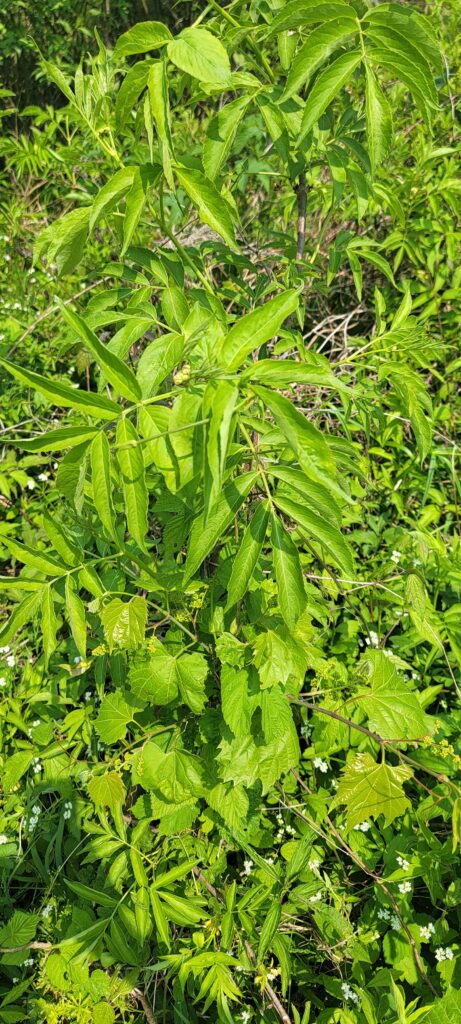
Opposite pinnate leaves of the elderberry shrub.
Common Prickly-ash – Zanthoxylum americanum
A facultative plant found primarily in the Midwest, it has pinnate leaves that are small and egg-shaped with finely rounded teeth. The bark is smooth and gray to dark brown while the twigs are gray with thorns in pairs at nodes. It flowers from April to May. Indigenous people used it to treat several ailments such as toothaches. Scientific research is being done to determine if it has antifungal or anticancer properties (https://mdc.mo.gov/discover-nature/field-guide/common-prickly-ash).
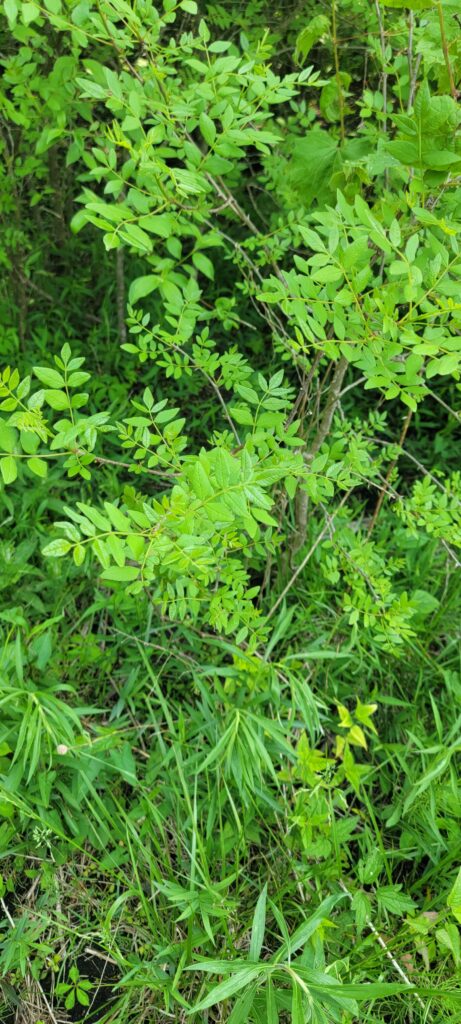
Leaves of the prickly-ash.
Especially “Conservative” Plants
Prairie Valerian – Valeriana ciliata
Coefficient of conservatism – 10
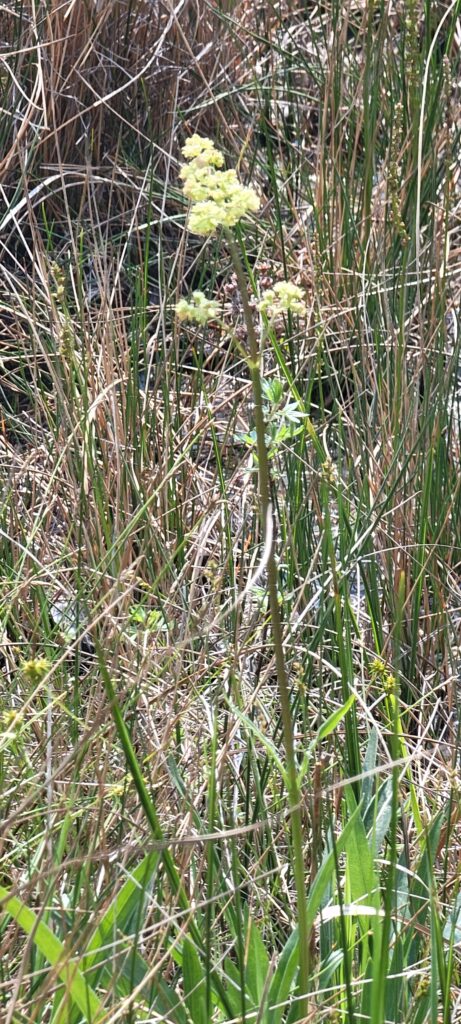
Swamp Birch – Betula pumila
Coefficient of conservatism – 10
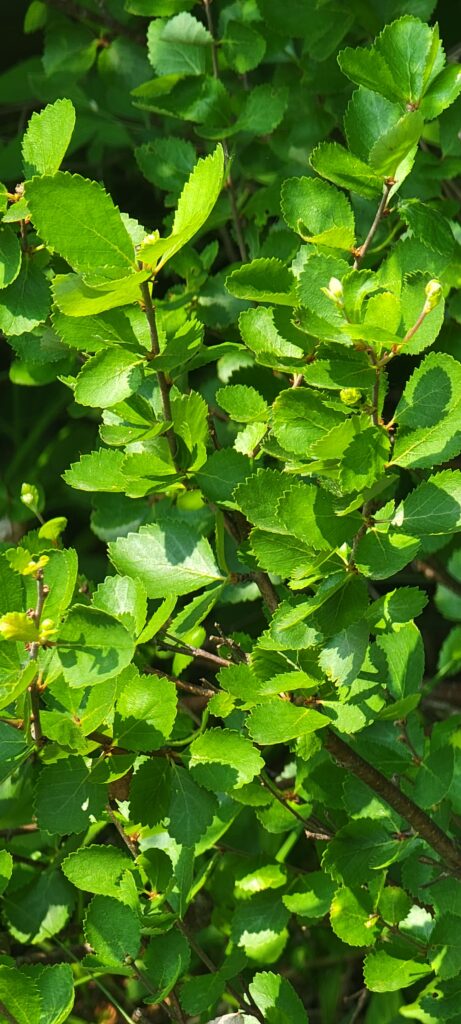
Shrubby Cinquefoil – Potentilla fruticosa
Coefficient of conservatism – 10
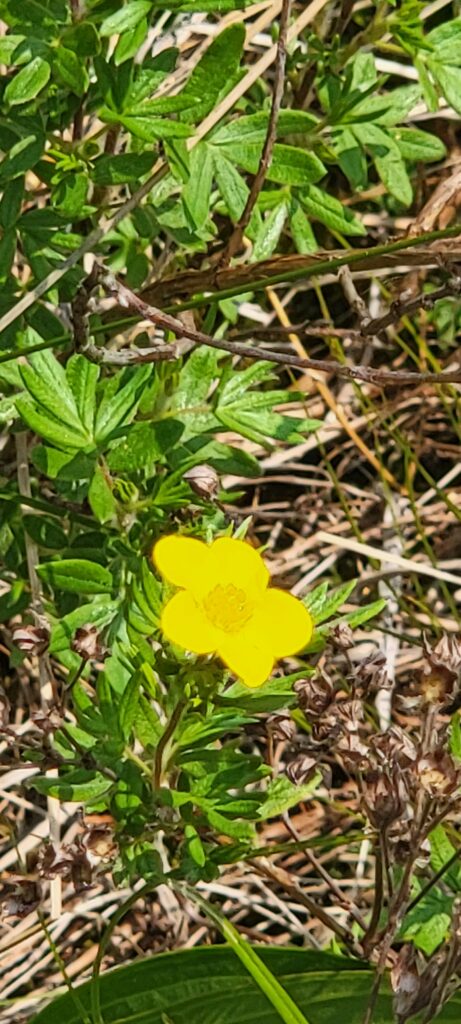
Northern White Cedar – Thuja occidentalis
Coefficient of conservatism – 9
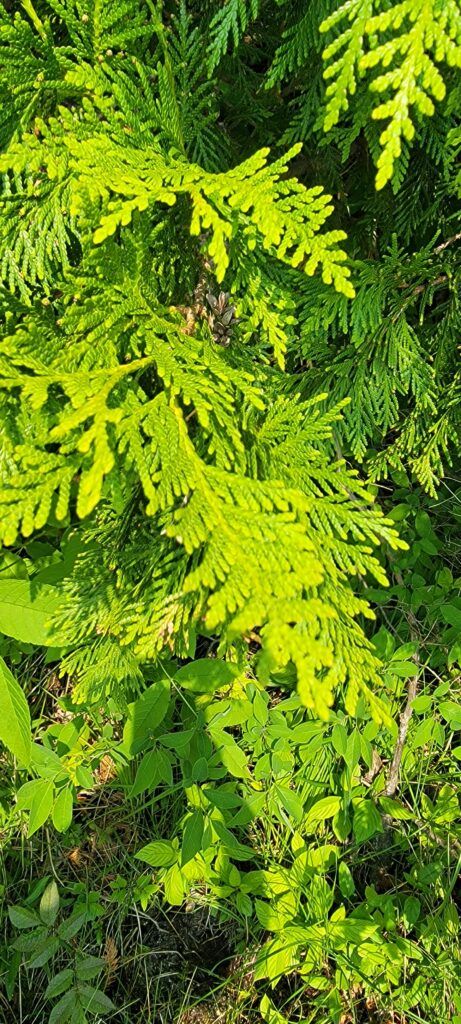
Two Ash Species!
As both are part of the fraxinus genus, they have opposite, pinnate leaves.
Green Ash – Fraxinus pennsylvanica
Green ash have stems on their leaflets as well as glossy leaflets.
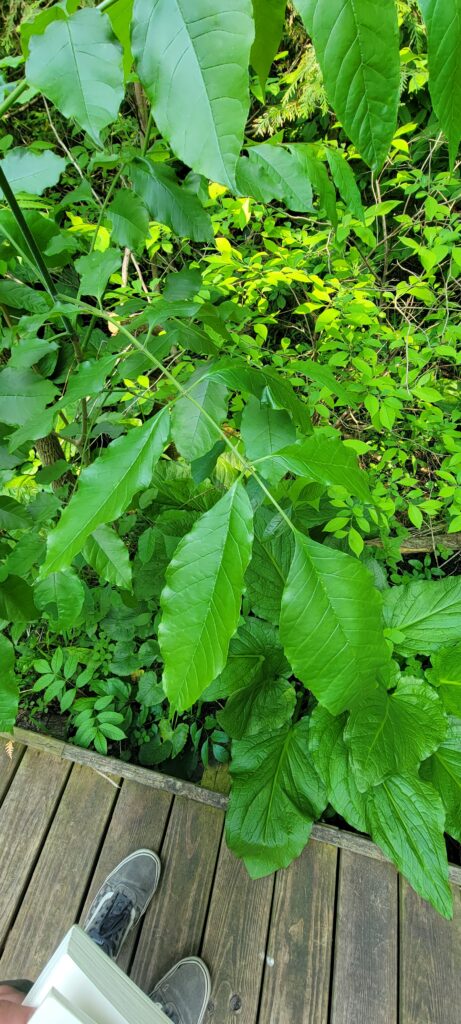
Black Ash – Fraxinus nigra
The leaflets on these are more matte and are attached directly to the stem.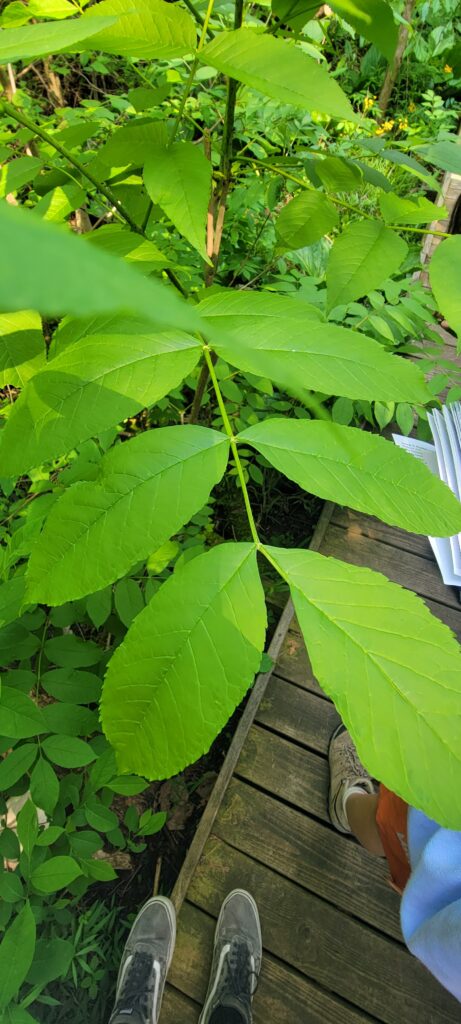
Floristic Quality
SWAMP FOREST ABBREVIATED SPECIES LIST
(in no particular order)
- Caltha palustris
- Marsh-Marigold
- OBL
- CC: 6
- Iris viginica
- Southern blue flag
- OBL
- CC: 6
- Lindera benzoin
- Spicebush
- FACW-
- CC: 5
- Senecio aureus
- Golden ragwort
- FACW
- CC: 4
- Symplocarpus foetidus
- Skunk cabbage
- OBL
- CC: 6
- Ranunculus septentrionalis
- Northern swamp buttercup
- FAC
- CC: 4
FQAI Value: 12.66
SEDGE MEADOW ABBREVIATED SPECIES LIST
(in no particular order)
- Dasyphora fruticosa
- Shrubby cinquefoil
- FACW
- CC: 10
- Drosera rotundifolia
- Round leaved sundew
- OBL
- CC: 7
- Betula pumila
- Swamp Birch
- OBL
- CC: 10
- Valeriana uliginosa
- Swamp valerian
- FACW+
- CC: 10
- Toxicodendron vernix
- Poison sumac
- OBL
- CC: 7
- Utricularia minor
- Lesser bladderwort
- OBL
- CC: 6
FQAI Value: 20.41
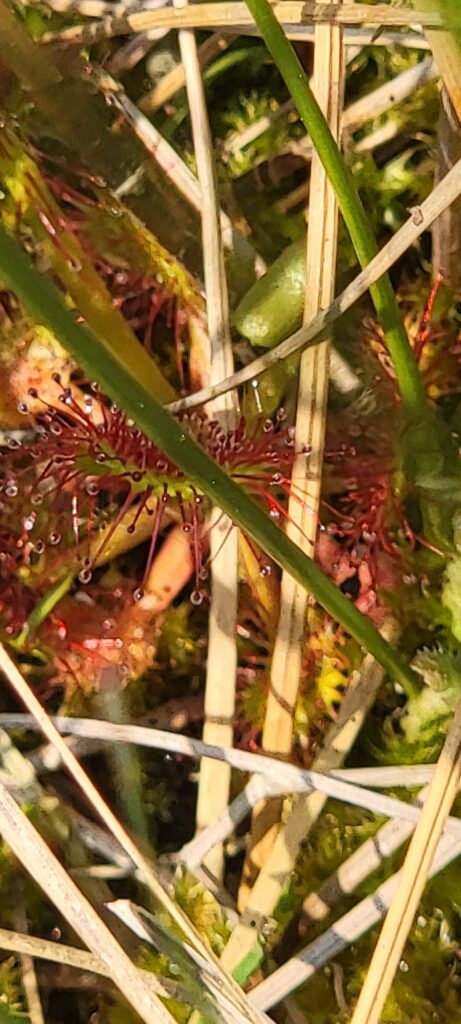
Round leaved sundew
